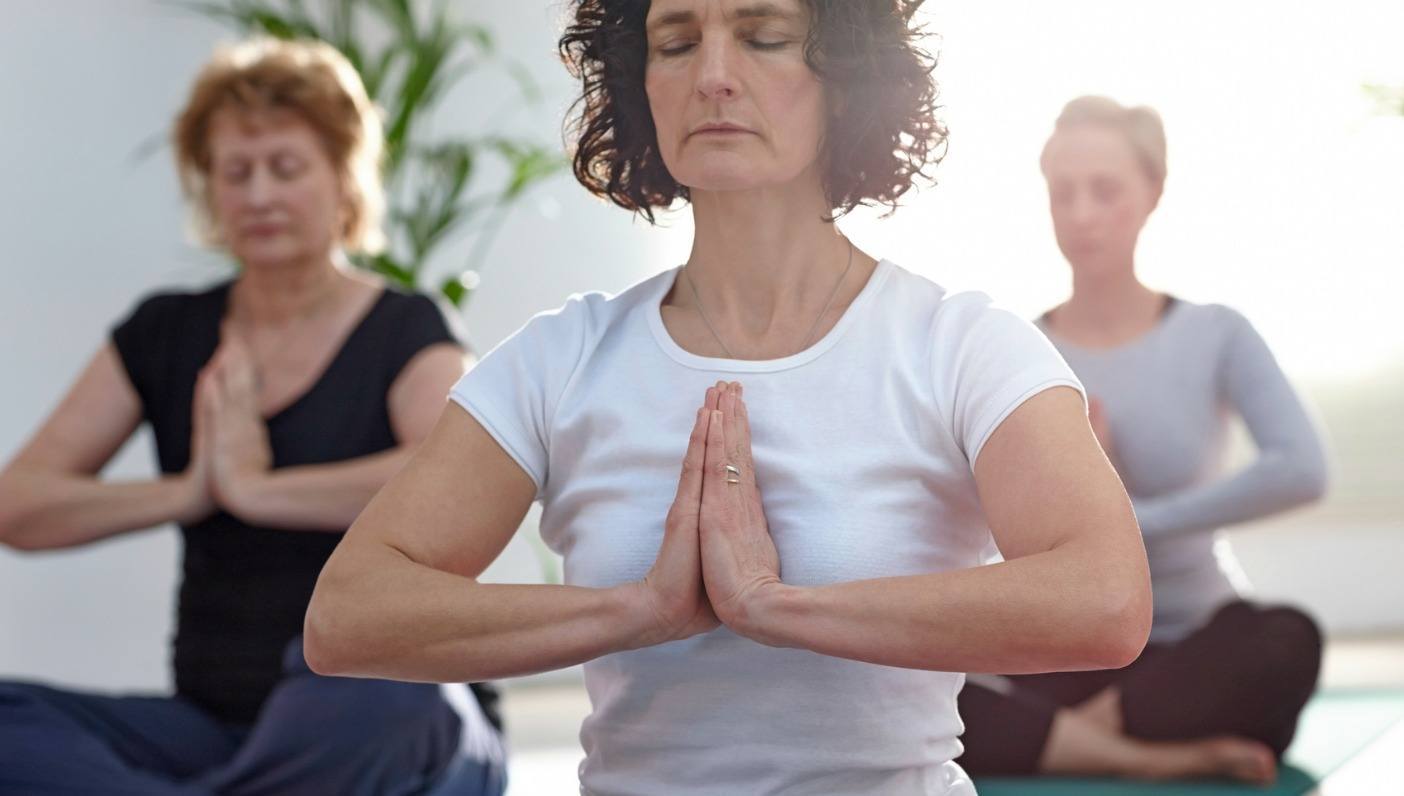
As we age, our bodies change and our yoga practice shifts to support our needs. Aging is inevitable: Every day we get older, and getting older comes with attendant changes in body, mind, energy, and ability. So what does the philosophy of yoga tell us about accepting the changes that come with this process?
Strong and Steady Poses
The only yoga sutra to mention asana (postures) is 2.46, and this sutra is quite simple. It tells us that asana should be steady, but comfortable. There is no pose prerequisite to having a committed yoga practice and being a yogi. As long as the practice is strong and sweet, yoga is happening!
The good news is that the physical postures of yoga can be modified and made accessible to most everyone. And even when the poses are no longer possible for the very elderly or injured, pranayama and meditation continue as the practice. Essentially, everything is yoga with the right intention of presence, breath, and observation. Our physical practice will change, but the heart of our practice can continue to get stronger.
Look Deep
Svadhyaya, the fourth Niyama, reminds us that one of our highest duties is to look deep. As we age, self-study allows us to refine our values, get to know ourselves anew, and reflect accurately on our needs. A committed practice to knowing ourselves can help us accept the changes that aging brings. Indeed, if we have a committed relationship to ourselves and watch the changes unfold slowly, we might even find an easy acceptance of aging as a graceful and natural part of our path in life.
Be Content
When anything happens in life—any happy or sad event, any change—we get to determine how we’ll handle it. At the heart of santosha, the second Niyama, is the idea that we can choose contentment through acceptance. Acceptance is the spirit of santosha—acceptance for what is, without complaint or resistance. Santosha also reminds us to have gratitude for what we do have. As we age, it’s easy to see the losses: We might recognize waning energy, we might identify poses that no longer feel comfortable, we might lament about the way our bodies shift. But because santosha encourages contentment, we can reframe this perspective: What is wonderful right now? What gifts come with advancing years? What joys can we celebrate with every passing birthday?
Let Go
The klesas, or mind-derived obstacles that cause suffering, remind us that attachment will not help us. Asmita is a klesa that is often interpreted to mean “ego.” It is asmita that encourages us to identify solely with the external parts of us that change, rather than our true, deeper selves who remain unchanged through age or circumstance. The antidote to this avidhya (unclear thinking) is to remember that we are far more than our external selves. Indeed, all of the klesasa are mind-derived. They are like wearing glasses that incorrectly color our view of the world. And while it’s hard to recognize that our view is being colored by asmita, with self-study and meditation we can learn to see the truth: We remain ourselves, even as we age and our physical body changes.
Savasana
At the end of every yoga practice, we spend several minutes in Corpse Pose, where we lie on the earth and rest our breathing bodies. For beginning yogis, accepting this stillness of body and mind can be one of the most challenging asanas. We practice Corpse Pose in part as a reminder that we are all moving toward the final letting go. Advanced practitioners arrive in Savasana with joy and relief, ready to celebrate the fruits of a good practice that they have worked hard to achieve. Yogis can take that same idea into our navigation of the practice of life and aging: Every year we are moving toward the end and living life with joy, celebrating the goodness we have experienced through enjoyment of life. Savasana can become a reminder that growing older is natural, inevitable, and a cause for celebration.
—
 Alexandra DeSiato offers yoga for healthy aging and thinks of yoga as a tool for illness, aging, and injury. Her most common in-class cue is “just squirm around on your mat,” which follows from her belief that the best yoga practice is the one that follows from deep self-listening. You can find tips and sequences—and a fresh approach to yoga for healthy aging—at Yoga for Aging Athletes, the blog she co-writes with Yoga for Athletes expert Sage Rountree. Connect with her at alexandradesiato.com.
Alexandra DeSiato offers yoga for healthy aging and thinks of yoga as a tool for illness, aging, and injury. Her most common in-class cue is “just squirm around on your mat,” which follows from her belief that the best yoga practice is the one that follows from deep self-listening. You can find tips and sequences—and a fresh approach to yoga for healthy aging—at Yoga for Aging Athletes, the blog she co-writes with Yoga for Athletes expert Sage Rountree. Connect with her at alexandradesiato.com.
